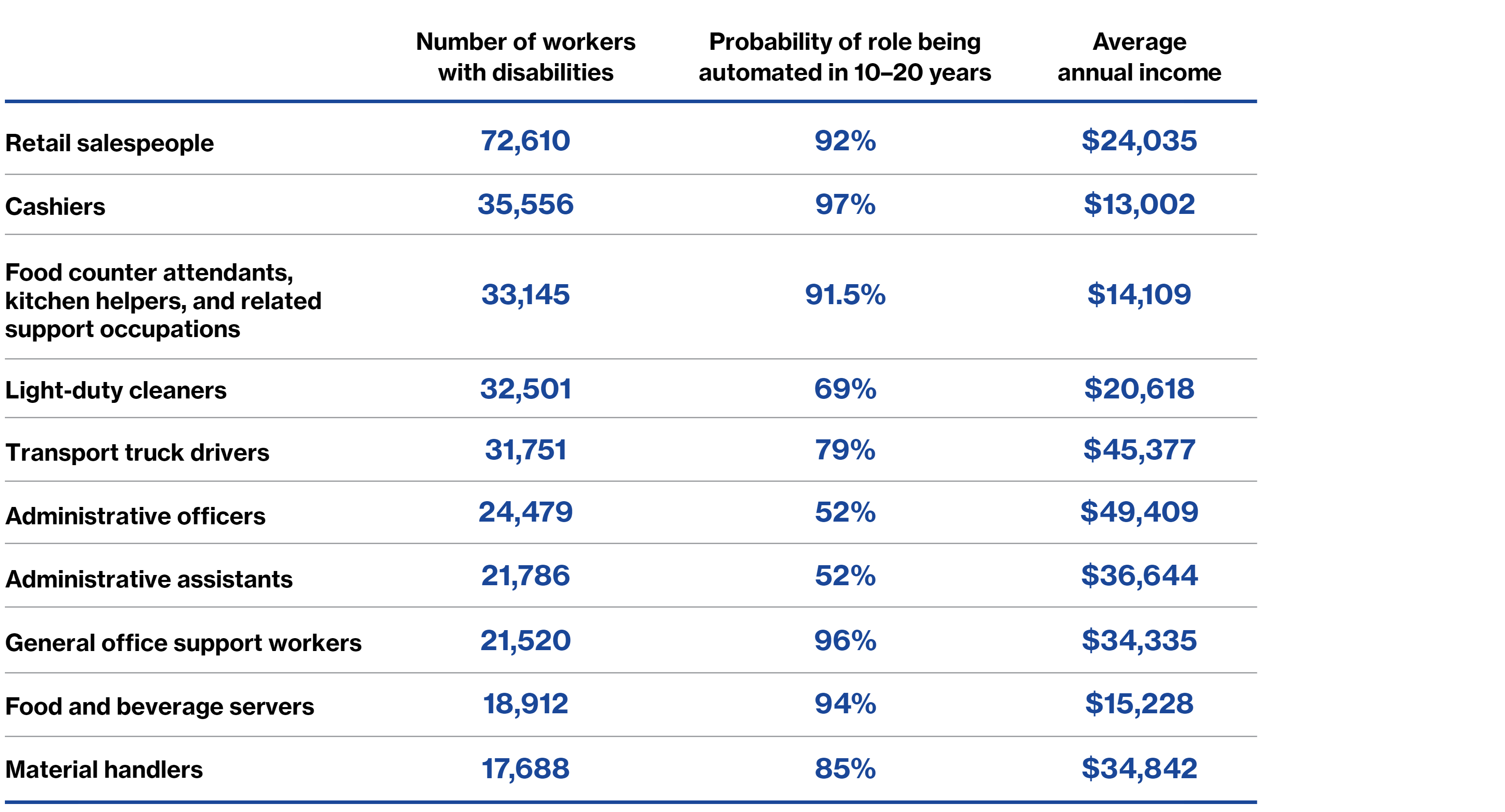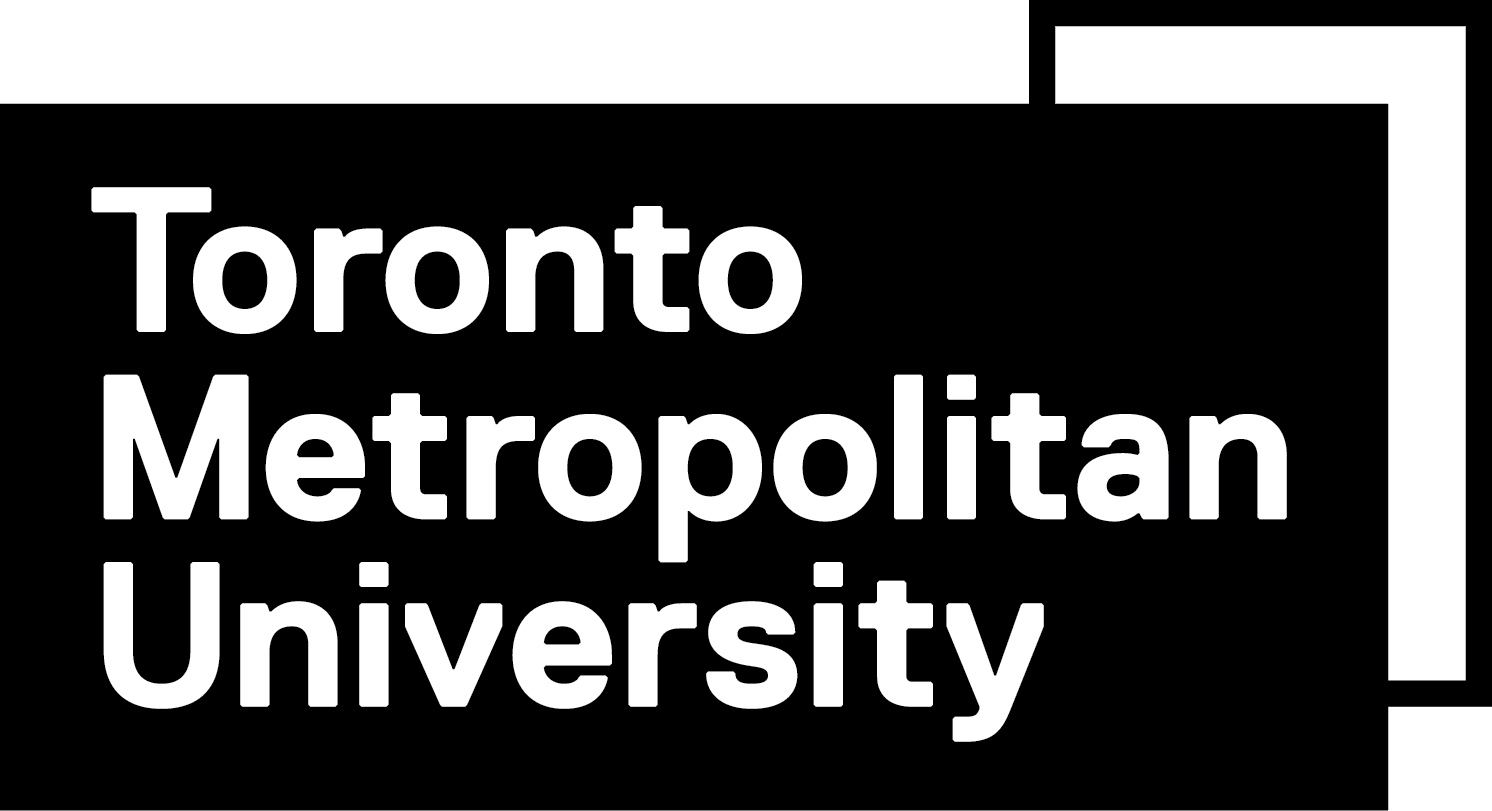
Everyone needs career options, including people with disabilities.
The Conference Board of Canada, on behalf of the Future Skills Centre, is leading a study to support the
job transitions of people with disabilities.
The study aims to promote labour market retention and career mobility for this equity-deserving group.

We’re building on Conference Board work on automation, career mobility, and accessibility to:
- identify possible job transitions based on core skills that people with disabilities already have
- propose accessible training opportunities as needed
- recommend new career paths that offer more job security and higher wages

Canadians with disabilities are over-represented in low-paying jobs that are at high risk of automation

People with disabilities have higher rates of unemployment and underemployment than non-disabled people. Even more concerning, many of the jobs that people with disabilities do will likely be automated over the next two decades.
As automation increases, technology like self-checkout machines and 3D printers will take over tasks that people are now paid to do. This move toward automation has only grown during the COVID-19 pandemic. Unlike people, technology doesn’t get sick.
We used Canadian employment data and Conference Board modelling to identify the top 10 occupations where people with disabilities often work that are also at high risk of automation.
Automation could mean that the job will be lost completely or that machines will take over specific tasks. At least half of these jobs are considered low income, which adds to the financial insecurity facing far too many Canadians with disabilities.
Top 10 Roles That Persons With Disabilities Work in With a High Risk of Automation

We Want to Understand Three Things
1. Viable job transitions out of high-automation, low-paying roles
A job transition refers to leaving one job and moving into a new role. For a new role to be a viable transition from the old role, it should:
- require a similar skill set
- offer equal or higher wages
- have strong growth prospects
- have a lower risk of automation
Some job transitions require extra training to build on existing skills and meet the educational requirements of a new role.
2. Training strategies
Training strategies that support job transitions involve anything from short upskilling initiatives to college diplomas. Some transitions require a combination of training strategies.
- Upskilling refers to learning new skills in a specific knowledge area, such as coding or leadership. Many workplaces, colleges and universities, and private education platforms—like LinkedIn Learning—offer upskilling programs.
- Other training strategies involve apprenticeships, mentorships, or post-secondary degrees, diplomas, and certifications.
3. Accessibility barriers in workplaces
Accessibility barriers are largely to blame for why people with disabilities are more likely than other Canadians to work in low-paying, high-automation roles. Social and economic inequities also make it hard for people with disabilities to move from those roles to more secure occupations.
Here’s what we mean by accessibility barriers in the workplace:

Social stigma and discrimination
Stigma, or negative attitudes and behaviours, toward people with disabilities can reduce their work and training opportunities.
- Employers may have a limited understanding of disability and think it’s a disadvantage in the workplace.
- People with disabilities are more likely to be harassed and bullied at work.
- People with disabilities too often face stereotypes from colleagues and supervisors that they are less skilled than others—and misconceptions that they receive special treatment.
- Stigma can result in pay discrimination: people with disabilities make an average of 10% less than other Canadians, even when they have the same education and experience.

Lack of workplace accommodations
Workplace accommodations include anything from flexible hours to accessible office arrangements.
- People with disabilities report a lack of accessibility supports at work and say requests for accommodations are often denied.
- Employers may think workplace accommodations will be expensive, even though research shows they come at little to no cost.
- People with disabilities describe limited opportunities for advancement, which could explain why few work in management roles.

Low job security
Many people with disabilities work in roles with low job security, which means there is a large chance they could lose their jobs unexpectedly.
- Many of the low-paying, part-time roles where people with disabilities work do not offer paid sick days, health benefits, or pension plans.
- During economic downturns like the COVID-19 pandemic, people with disabilities are more likely to face layoffs and reduced hours than other working Canadians.
- Women with disabilities, Black and Indigenous people with disabilities, single parents with disabilities, those with multiple disabilities, and those with more severe disabilities are at the highest risk of layoffs.
What’s Next?

We will interview 30 experts on accessible employment with lived experience of disability to understand the barriers—and the successes—facing people with disabilities throughout the job transition process.
Insights from stakeholders will build on our analysis, which leverages the Conference Board’s ongoing work in job transitions and automation, as well as the data informing innovative tools such as:
- OpportuNext, a free-to-use career tool created in partnership with the Future Skills Centre
- Automation Vulnerability Index, which measures how susceptible a region is to disruption due to automation
Our work will help employers, government agencies, and policy-makers better understand how to support people with disabilities to transition into new jobs. Research insights can help remove existing barriers for people with disabilities and be used to make program and funding recommendations.

We want to support people with disabilities to find new career and training pathways before they are displaced. Clear employment prospects help keep people in the labour market.
FSC partners




The responsibility for the findings and conclusions of this research rests entirely with The Conference Board of Canada.


